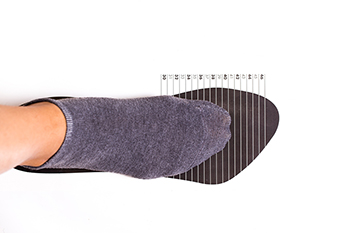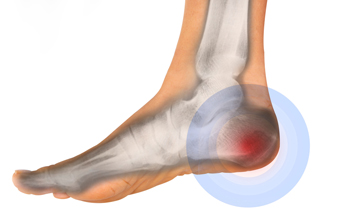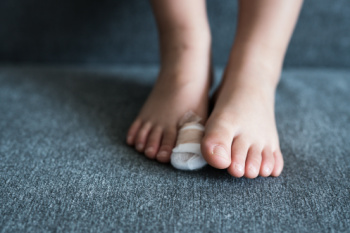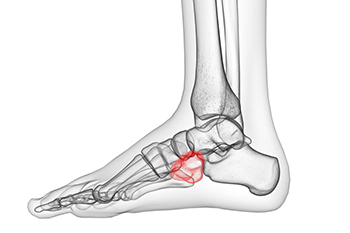Items filtered by date: August 2025
Reminder: When Was the Last Time...?
How to Measure and Wear High Heels with Comfort and Stability

When choosing high heels, the most important measurement is the heel-to-ball length, not the overall foot size. This ensures proper alignment, allowing the ball of the foot to rest where the shoe bends. A poor fit in this area can cause instability, discomfort, and long-term issues. To improve stability, select heels with a pitch that remains perpendicular to the ground and a base that supports balance. Proper fit and posture reduce strain on the feet and lower legs. A podiatrist can assess your foot structure and recommend strategies or custom inserts to improve comfort in high heels. If you have developed a foot or ankle injury from frequently wearing high heels, it is suggested that you consult a podiatrist who can treat various foot injuries, and guide you how to choose high heels that properly fit your foot.
Getting the right shoe size is an important part of proper foot health. Seek the assistance of Daniel Mendoza, DPM from Nashville Podiatry. Our doctor will provide the care you need to keep you pain-free and on your feet.
Getting the Right Shoe Size
There are many people who wear shoes that are the incorrect size, negatively affecting their feet and posture. Selecting the right shoes is not a difficult process, so long as you keep several things in mind when it comes to choosing the right pair.
- When visiting the shoe store, use the tools available to measure your foot.
- Be sure there is ‘wiggle room’. There should be about an inch between your toes and the tip of your shoes.
- Do not always assume you are the same size, as manufacturers run differently.
- Purchase shoes later in the day, as your feet swell as the day progresses.
- If a shoe is not comfortable, it is not suitable. Most shoes can’t be ‘broken in’, and comfort should be the ultimate goal when it comes to choosing the right pair of shoes
As our feet hold our body weight and keep us moving, it is important to treat them right. Picking the right pair of shoes can provide your feet comfort and mobility without pain.
If you have any questions, please feel free to contact our office located in Hendersonville, TN . We offer the newest diagnostic and treatment technologies for all your foot care needs.
Risk Factors and Causes of a Bruised Heel Bone

A bruised heel bone can occur suddenly due to a fall, jumping, or stepping on a sharp object. This type of injury also can develop gradually from repeated impact on hard surfaces or stiff shoes. Risk factors for a bruised heel include advancing age, obesity, and endurance running. A history of cortisone shots, conditions like diabetes or rheumatoid arthritis, and previous heel injuries or surgery are other possibilities. Healing time for a bruised heel bone depends on the severity of the injury and level of activity. If the injury is sudden and severe or if pain persists, it is important to consult a podiatrist, as they may recommend imaging to rule out fractures or soft tissue damage. This type of doctor can prescribe custom orthotics or, in some cases, surgery. If you have symptoms of a bruised heel bone, it is suggested that you schedule an appointment with a podiatrist for appropriate treatment options.
Many people suffer from bouts of heel pain. For more information, contact Daniel Mendoza, DPM of Nashville Podiatry. Our doctor can provide the care you need to keep you pain-free and on your feet.
Causes of Heel Pain
Heel pain is often associated with plantar fasciitis. The plantar fascia is a band of tissues that extends along the bottom of the foot. A rip or tear in this ligament can cause inflammation of the tissue.
Achilles tendonitis is another cause of heel pain. Inflammation of the Achilles tendon will cause pain from fractures and muscle tearing. Lack of flexibility is also another symptom.
Heel spurs are another cause of pain. When the tissues of the plantar fascia undergo a great deal of stress, it can lead to ligament separation from the heel bone, causing heel spurs.
Why Might Heel Pain Occur?
- Wearing ill-fitting shoes
- Wearing non-supportive shoes
- Weight change
- Excessive running
Treatments
Heel pain should be treated as soon as possible for immediate results. Keeping your feet in a stress-free environment will help. If you suffer from Achilles tendonitis or plantar fasciitis, applying ice will reduce the swelling. Stretching before an exercise like running will help the muscles. Using all these tips will help make heel pain a condition of the past.
If you have any questions, please feel free to contact our office located in Hendersonville, TN . We offer the newest diagnostic and treatment technologies for all your foot care needs.
Caring for a Broken Toe

A broken toe may seem minor, but without proper care, it can lead to lasting pain or deformity. Most broken toes result from stubbing the toe or dropping something heavy on it. Symptoms often include swelling, bruising, and difficulty walking. Some people hear a pop at the time of injury. Not all breaks cause the toe to look crooked, so it is important not to ignore the pain. Rest, elevation, and gentle compression can help in the first hours after injury. Wearing stiff-soled shoes can protect the toe during healing. In some cases, buddy taping to a neighboring toe is recommended. More serious fractures may need splinting or surgery. If your toe remains swollen, painful, or difficult to move after an injury, it is suggested that you see a podiatrist to confirm the diagnosis and receive the right treatment.
Broken toes may cause a lot of pain and should be treated as soon as possible. If you have any concerns about your feet, contact Daniel Mendoza, DPM from Nashville Podiatry. Our doctor will treat your foot and ankle needs.
What Is a Broken Toe?
A broken toe occurs when one or more of the toe bones of the foot are broken after an injury. Injuries such as stubbing your toe or dropping a heavy object on it may cause a toe fracture.
Symptoms of a Broken Toe
- Swelling
- Pain (with/without wearing shoes)
- Stiffness
- Nail Injury
Although the injured toe should be monitored daily, it is especially important to have a podiatrist look at your toe if you have severe symptoms. Some of these symptoms include worsening or new pain that is not relieved with medication, sores, redness, or open wounds near the toe.
If you have any questions please feel free to contact our office located in Hendersonville, TN . We offer the newest diagnostic tools and technology to treat your foot and ankle needs.
Lateral Foot Pain and Cuboid Syndrome

Lateral foot pain refers to discomfort along the outer edge of the foot and may result from overuse, injury, poor foot mechanics, or conditions such as cuboid syndrome. This condition occurs when the cuboid bone is partially dislocated or misaligned, leading to sharp pain, weakness, or instability, especially during weight-bearing activities. Risk factors include ankle sprains, improper footwear, and repetitive stress. A podiatrist can diagnose the exact cause of lateral foot pain, perform necessary adjustments, provide custom orthotics, and recommend stretching and strengthening exercises. If you have persistent outer foot pain, do not ignore the symptoms. It is suggested that you promptly consult a podiatrist who can accurately diagnose and treat cuboid syndrome.
Cuboid syndrome, also known as cuboid subluxation, occurs when the joints and ligaments near the cuboid bone in the foot become torn. If you have cuboid syndrome, consult with Daniel Mendoza, DPM from Nashville Podiatry. Our doctor will assess your condition and provide you with quality foot and ankle treatment.
Cuboid syndrome is a common cause of lateral foot pain, which is pain on the outside of the foot. The condition may happen suddenly due to an ankle sprain, or it may develop slowly overtime from repetitive tension through the bone and surrounding structures.
Causes
The most common causes of cuboid syndrome include:
- Injury – The most common cause of this ailment is an ankle sprain.
- Repetitive Strain – Tension placed through the peroneus longus muscle from repetitive activities such as jumping and running may cause excessive traction on the bone causing it to sublux.
- Altered Foot Biomechanics – Most people suffering from cuboid subluxation have flat feet.
Symptoms
A common symptom of cuboid syndrome is pain along the outside of the foot which can be felt in the ankle and toes. This pain may create walking difficulties and may cause those with the condition to walk with a limp.
Diagnosis
Diagnosis of cuboid syndrome is often difficult, and it is often misdiagnosed. X-rays, MRIs and CT scans often fail to properly show the cuboid subluxation. Although there isn’t a specific test used to diagnose cuboid syndrome, your podiatrist will usually check if pain is felt while pressing firmly on the cuboid bone of your foot.
Treatment
Just as the range of causes varies widely, so do treatments. Some more common treatments are ice therapy, rest, exercise, taping, and orthotics.
If you have any questions, please feel free to contact our office located in Hendersonville, TN . We offer the newest diagnostic and treatment technologies for all your foot care needs.

